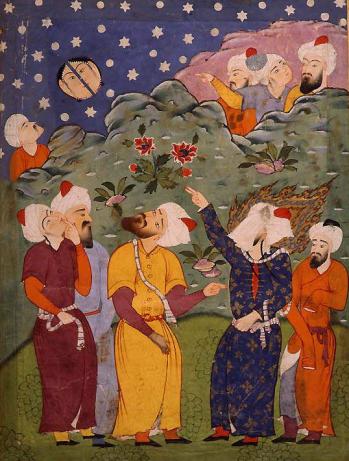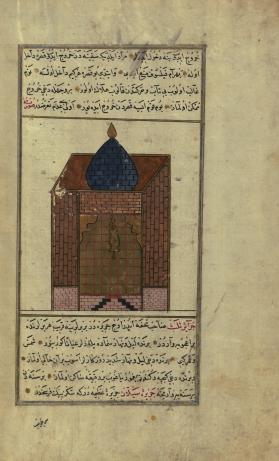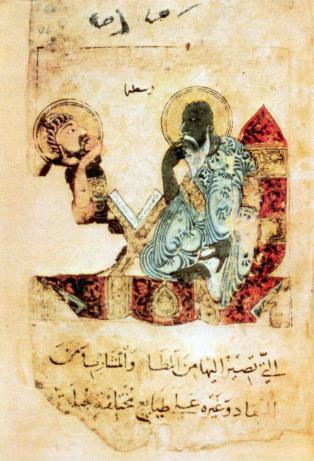They saw analogical reasoning as a scientific method that could yield understanding, speaking of it as a "path (sabīl, ṭarīq) to knowledge." This research project—part of the Research Group "Experience in the Premodern Sciences of Soul and Body, ca. 800–1650," which reconsiders the widespread view that experience was of little significance in premodern natural knowledge making—seeks specifically to gauge the role of experience and analogy in the context of the premodern Islamic science of kalām, or speculative theology.
A New Focus: Analogy and Analogical Reasoning in kalām
The significance of analogical reasoning in furthering scientific knowledge in Europe has frequently been highlighted in the academic literature: examples of well-known scientists who made use of analogy include Francis Bacon, Isaac Newton, and Johannes Kepler. For the history of science, it is therefore interesting to recognize that analogical reasoning also played an important role in other scientific traditions, such as kalām. This branch of science flourished in the ninth century to become one of the central disciplines in the premodern Islamic scientific tradition. Its practitioners discussed questions of a theological nature, such as God’s attributes and prophethood, but also of natural philosophy, such as the origin of the world and the matter from which it was made.
Premodern Islamic theologians made use of a variety of methods, including forms of reasoning and authoritative religious texts. Existing academic scholarship in this field often approaches the methods employed in kalām through the lens of "reason versus revelation." This perspective stresses how premodern practitioners of kalām emphasized the role of human reason in understanding and defending religious tenets, and that this hints towards its apologetic nature and demand for reason-based proofs. Such an approach leaves open the question of the role of experience in the science of kalām. The intention of the research project on analogies and analogical reasoning in premodern Islamic theology is therefore not to create a comprehensive account of the methods that Islamic theologians used to attain scientific knowledge, but to highlight that in analogical reasoning, phenomena that were accessible by sense experience were used as analogies to understand phenomena beyond sense experience.

Mohammed splits the Moon. Illustration taken from a Falnameh, a sixteenth century Persian book of prophesies. Source: Saxon State and University Library Dresden.
The Problem of the Origin of the World
Analogical reasoning played a significant role in a variety of contexts and questions discussed by Islamic theologians. One example is their discussion of the divine attributes, which they would frequently interpret in analogy to human attributes. Humans are said to be knowing due to knowledge they have, theologians argued. In analogy, God, who is described as being knowing in the Quran, must also possess an attribute of knowledge. Another problem was that of the origin of the world, and this research project looks at the role of analogical reasoning in establishing whether the world is originated in time—that is, whether its existence has a beginning—or whether it is pre-eternal, having always existed. This question is connected to that of whether the world—which, as theologians would establish, is originated—came to exist due to an outside cause, or whether it actualized its own existence. This problem took a prominent position in the thought of premodern Islamic theologians for a number of reasons, and is traditionally investigated at the very beginning of kalām works.
Theologians recognized that their object of enquiry was beyond the purview of direct human experience, yet they were certain that analogical reasoning based on experienceable phenomena could solve the problem. The various names by which they referred to their method—such as al-istishhād bi’l-shāhid ʿalā al-ghāʾib, dalālat al-shāhid ʿalā al-ghāʾib, and al-qiyās—all encapsulate the notion that certain experiences of the world can be used as "testimony," and by way of "analogy," for the problem under investigation. One of the sources used in this research is Ashʿari’s (d. 936 CE) Kitāb al-Lumaʿ. Ashʿari posed the question "What is the proof that there is a creator of creation?" To this he replied:
"What makes this clear is that cotton cannot change into spun thread, then a woven garment, without a weaver or maker. He who takes cotton and expects it to become spun thread and then a woven garment without a maker or weaver—he is out of his mind and in utter ignorance! Likewise, he who looks at a wasteland where there is no castle, and expects clay to turn into a different state and to stack itself on top of each other [as bricks], without a maker or builder—he is ignorant!"

Turkish version of ʿAjāʾib al-makhlūqāt (Wonders of Creation), by Zakarīyā al-Qazwīnī. Palace on Qaṣr Island (Indian Ocean), Walters Manuscript W.659, fol. 154b. Source: Walters Art Museum Illuminated Manuscripts.
Ashʿari here affirmed the world’s dependence on God as its creator—a phenomenon beyond sense experience—in analogy to the experience that human products depend for their existence on an agent.
Over a century later, Juwayni (d. 1085 CE) reported in his al-Shāmil on disputes between theologians of different schools about analogical reasoning:
"You are unable to prove the creator since you deny that we humans in the observable realm (i.e., the shāhid) actually bring about [our actions], but the way to affirm a verdict for the unobservable realm (i.e., the ghāʾib) is by linking it to the observable realm!"
This affirmed that the only way to prove that the world depends on God as its creator is by analogy to human actions. Yet this required affirming that humans are true creators of their actions—a notorious problem among theologians.
Making Sense of Analogical Reasoning in kalām
Asking certain questions will help us to further understand the significance of experience for practitioners of kalām, in the above and in other examples. Firstly, what kinds of analogies were used in kalām? What sorts of experiences of the world were raised and considered to work as analogies, and how did they work? What kinds of experienceable phenomena were thought to indicate something about phenomena beyond sense experience? And finally, what was the precise function of the analogies? Were they proper arguments, or were they intended to be merely persuasive? This project explores such questions to shed further light on the significance of experience in the methods employed by practitioners of kalām to advance their knowledge of the world.

Islamic illustration of Aristotle teaching a student. London, British Library MS or. 2784, f. 96r. Source: Wikimedia Commons.
